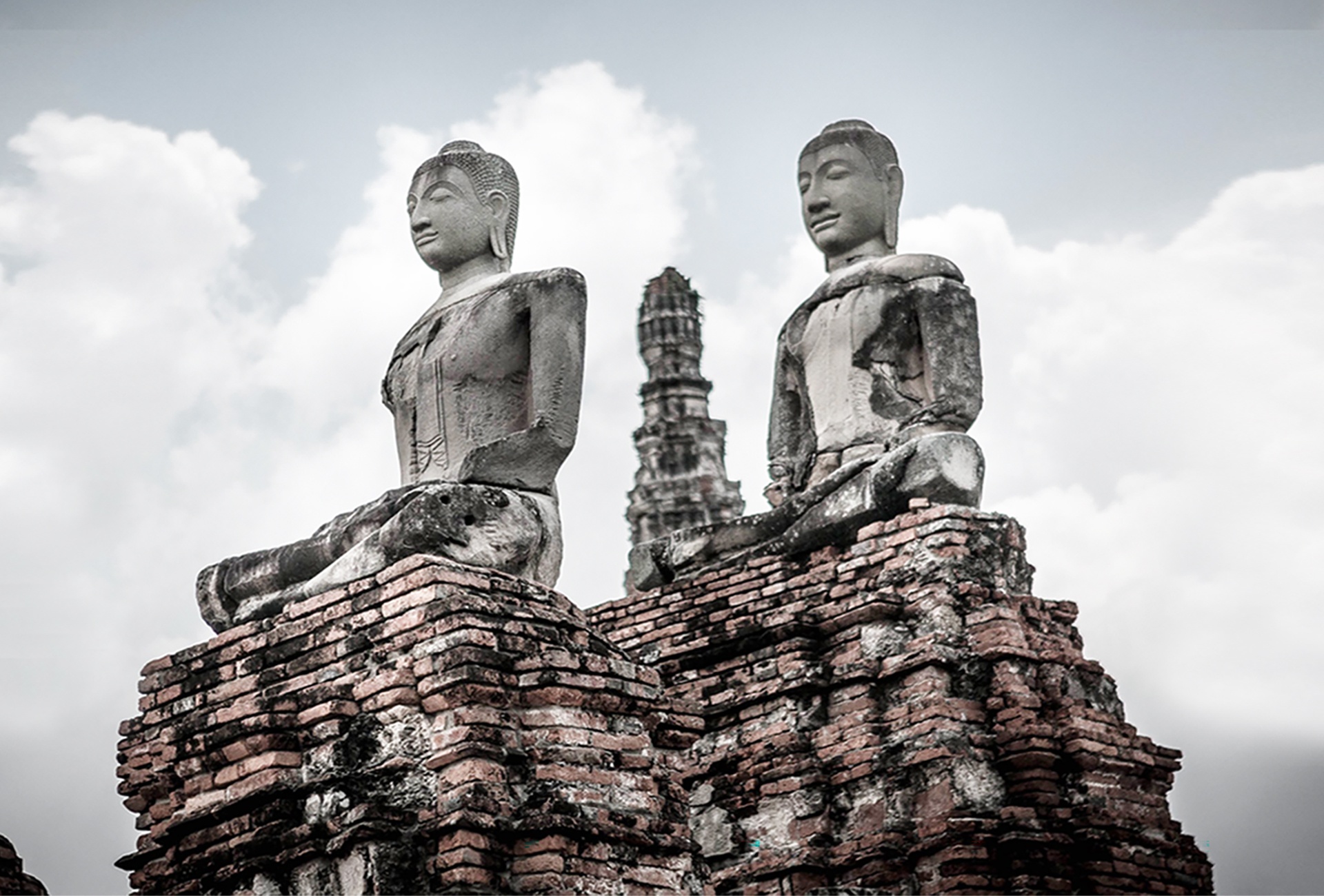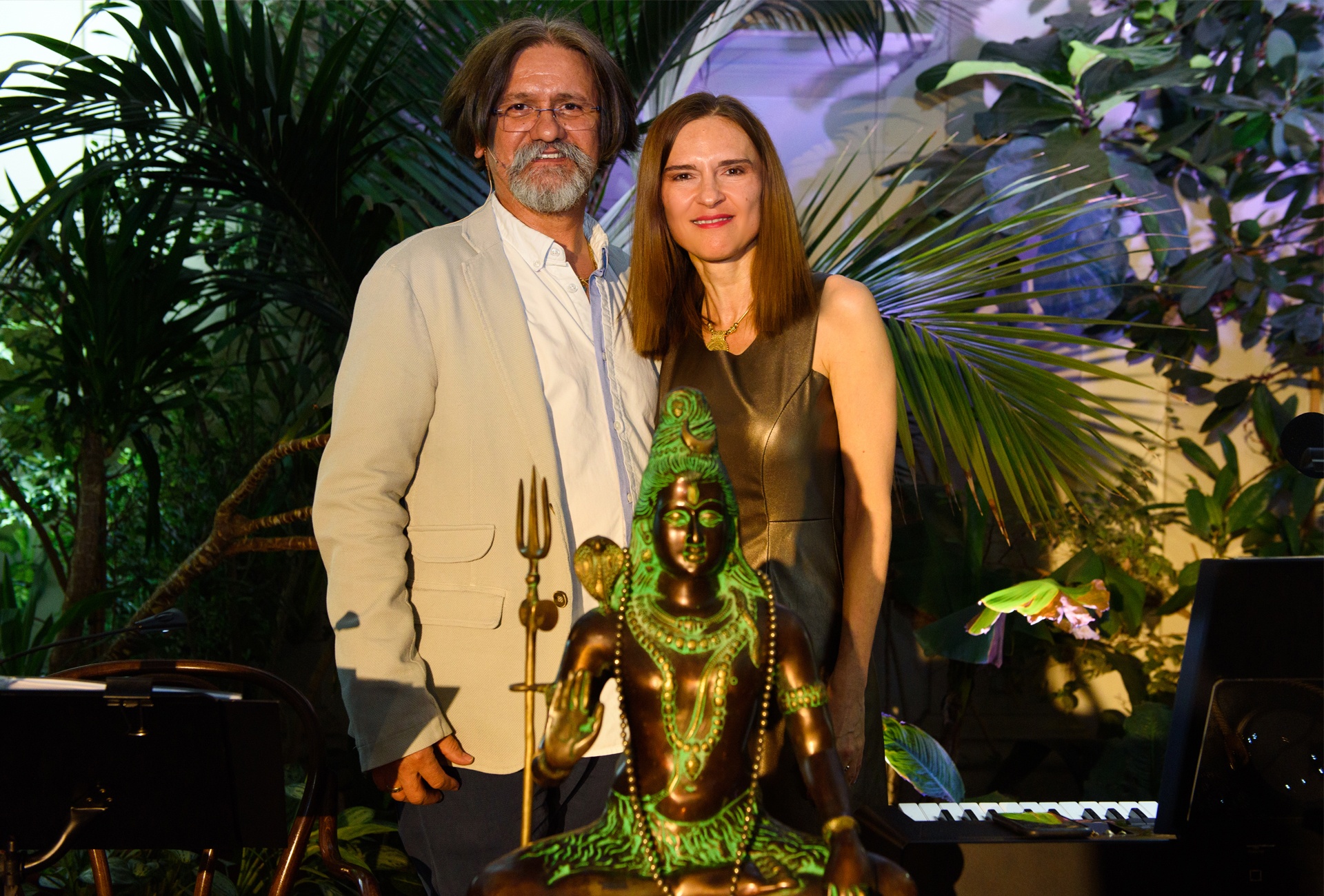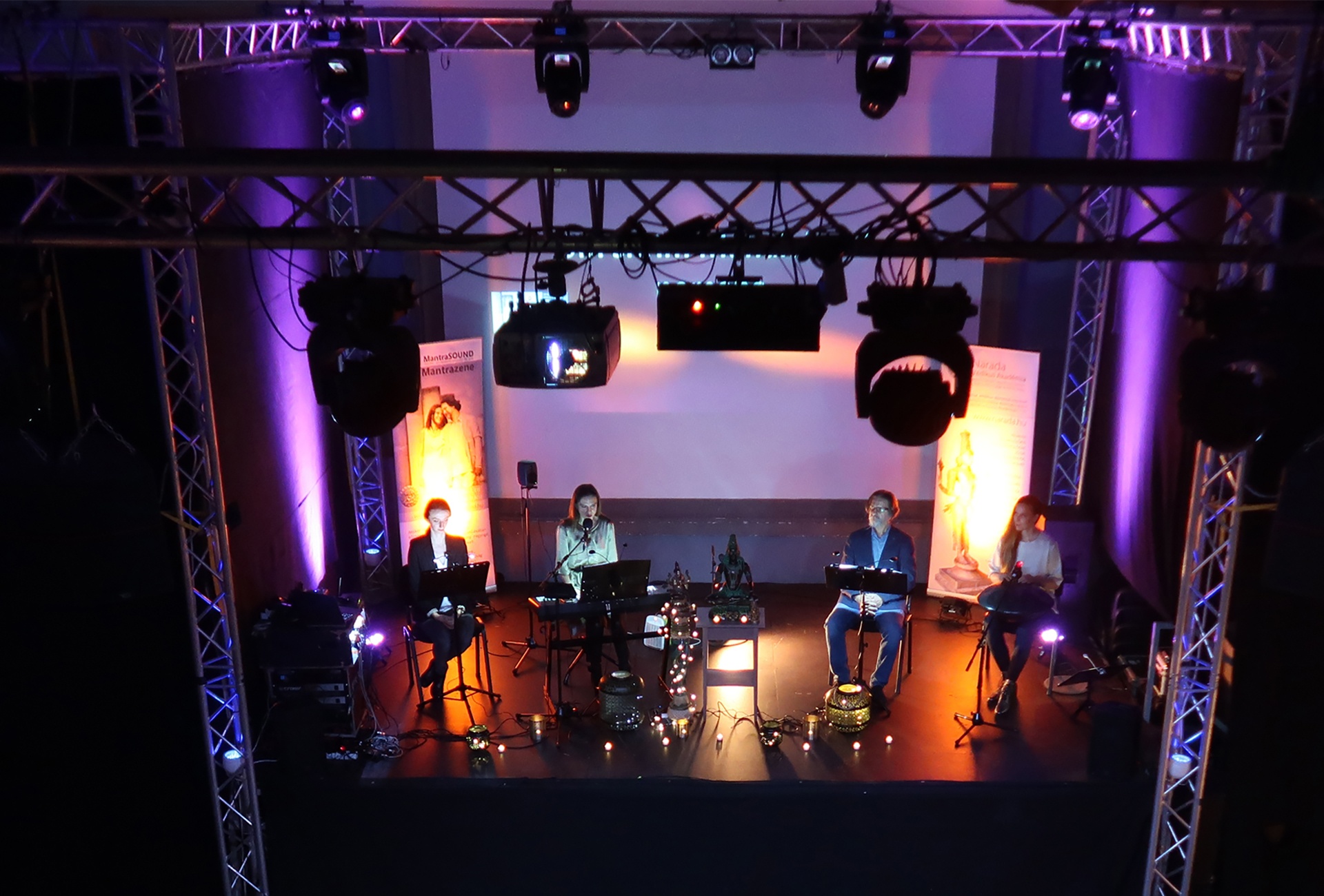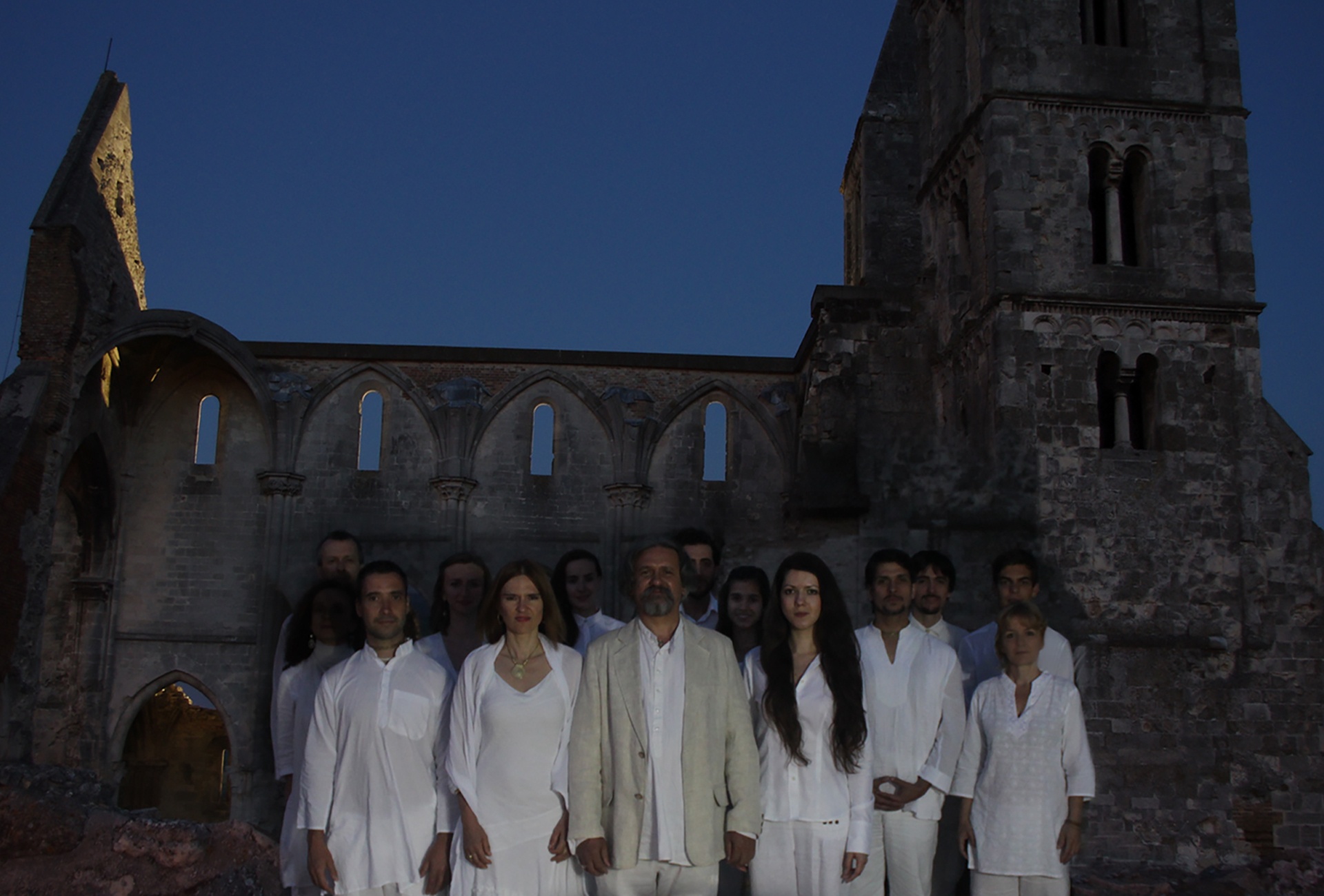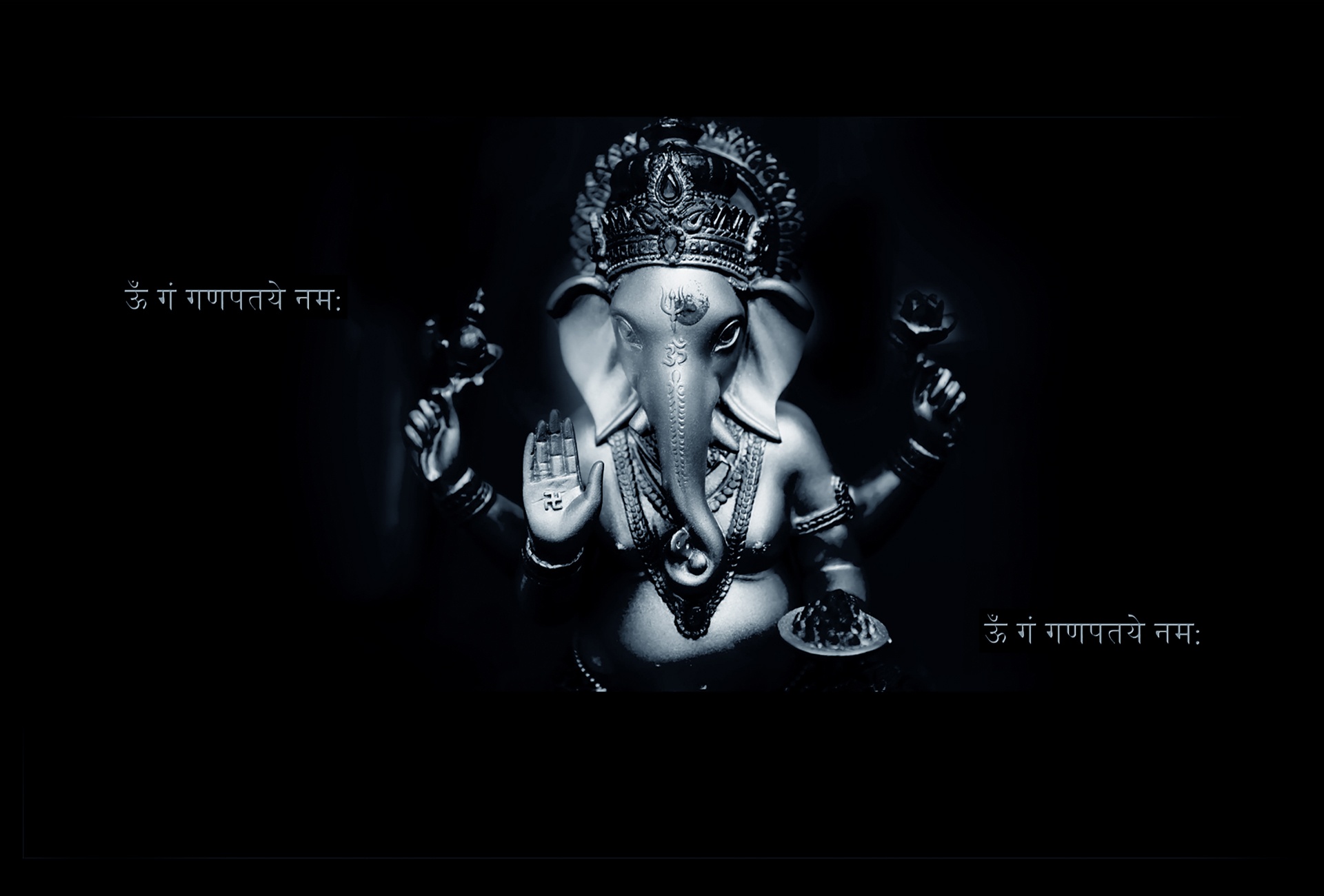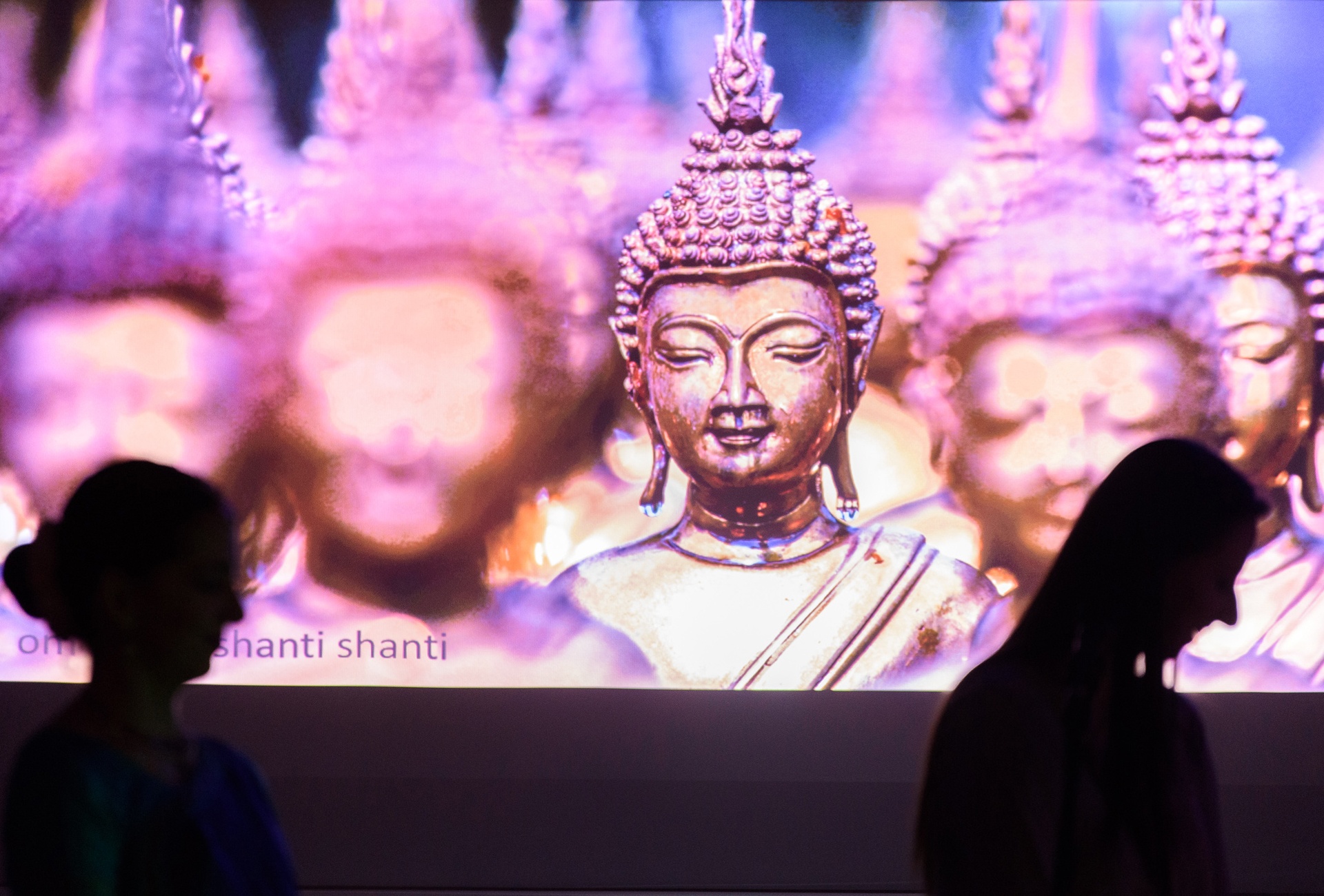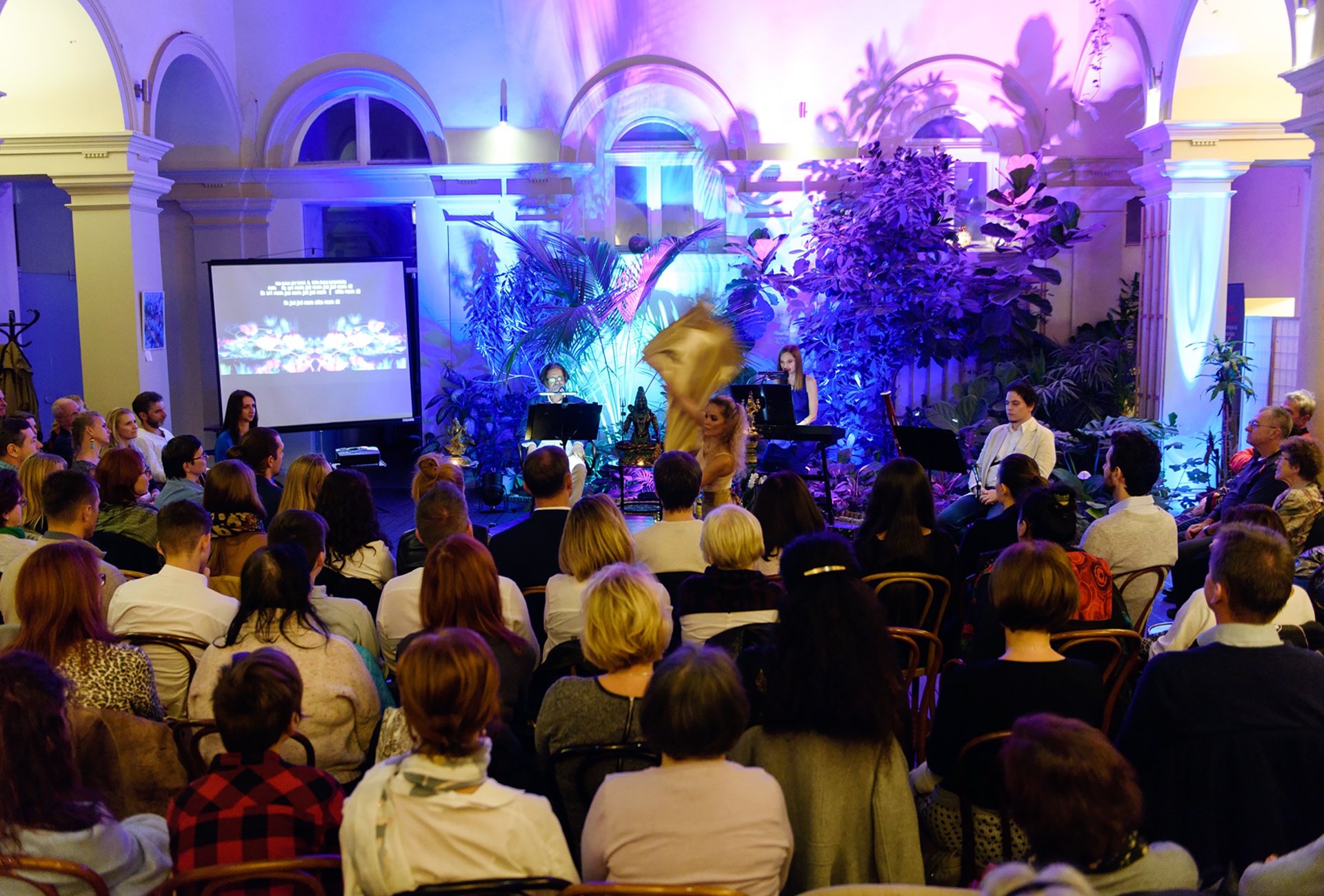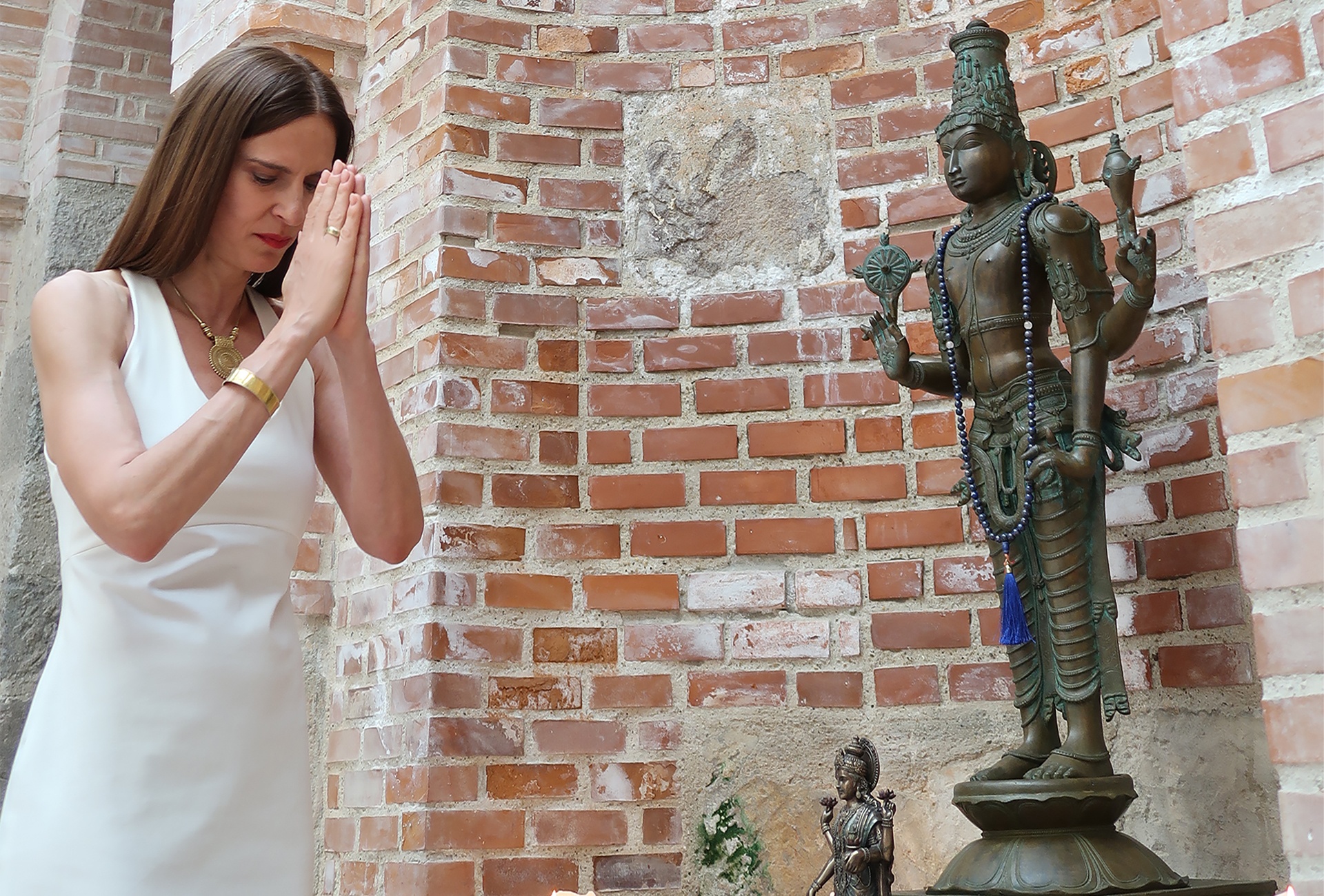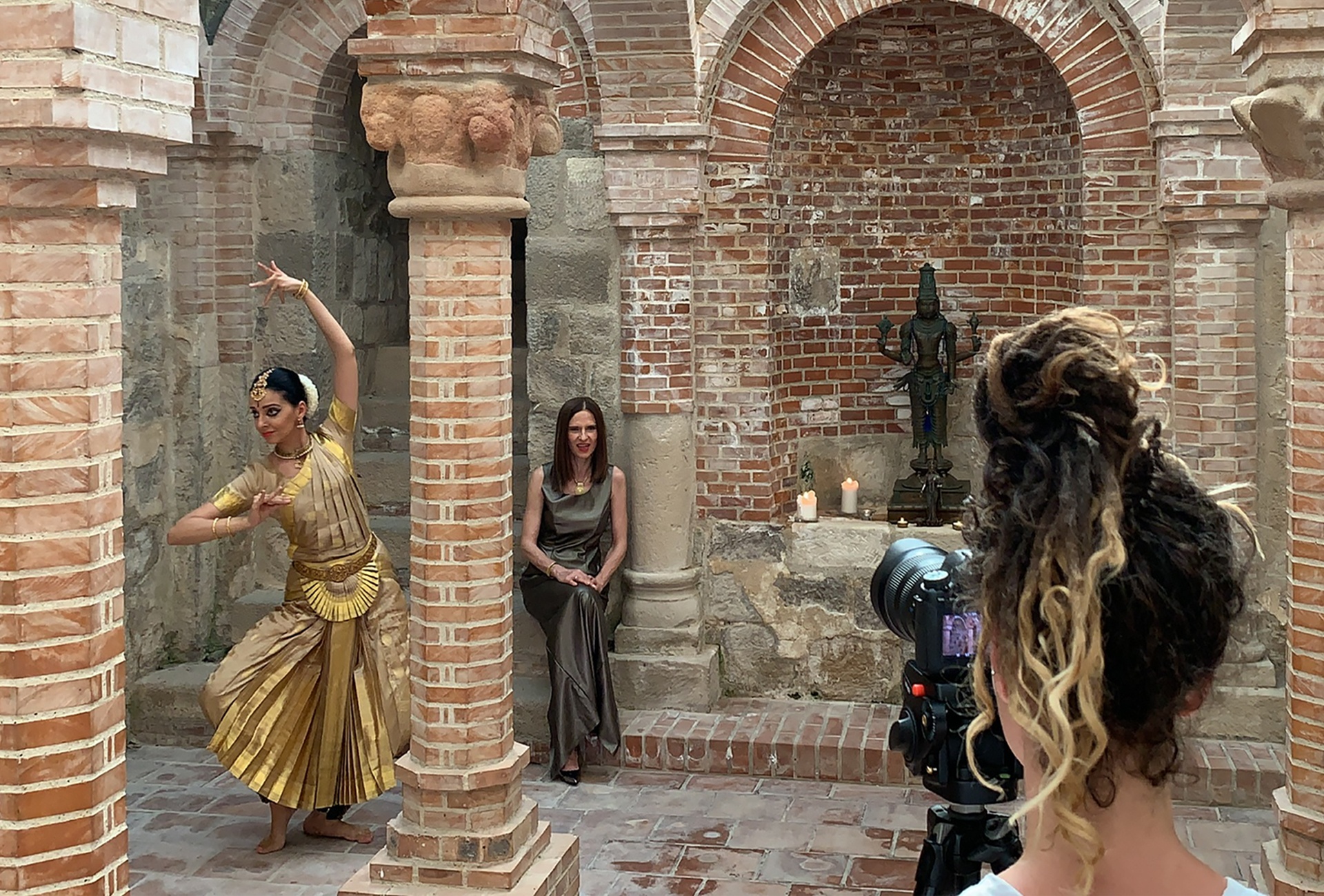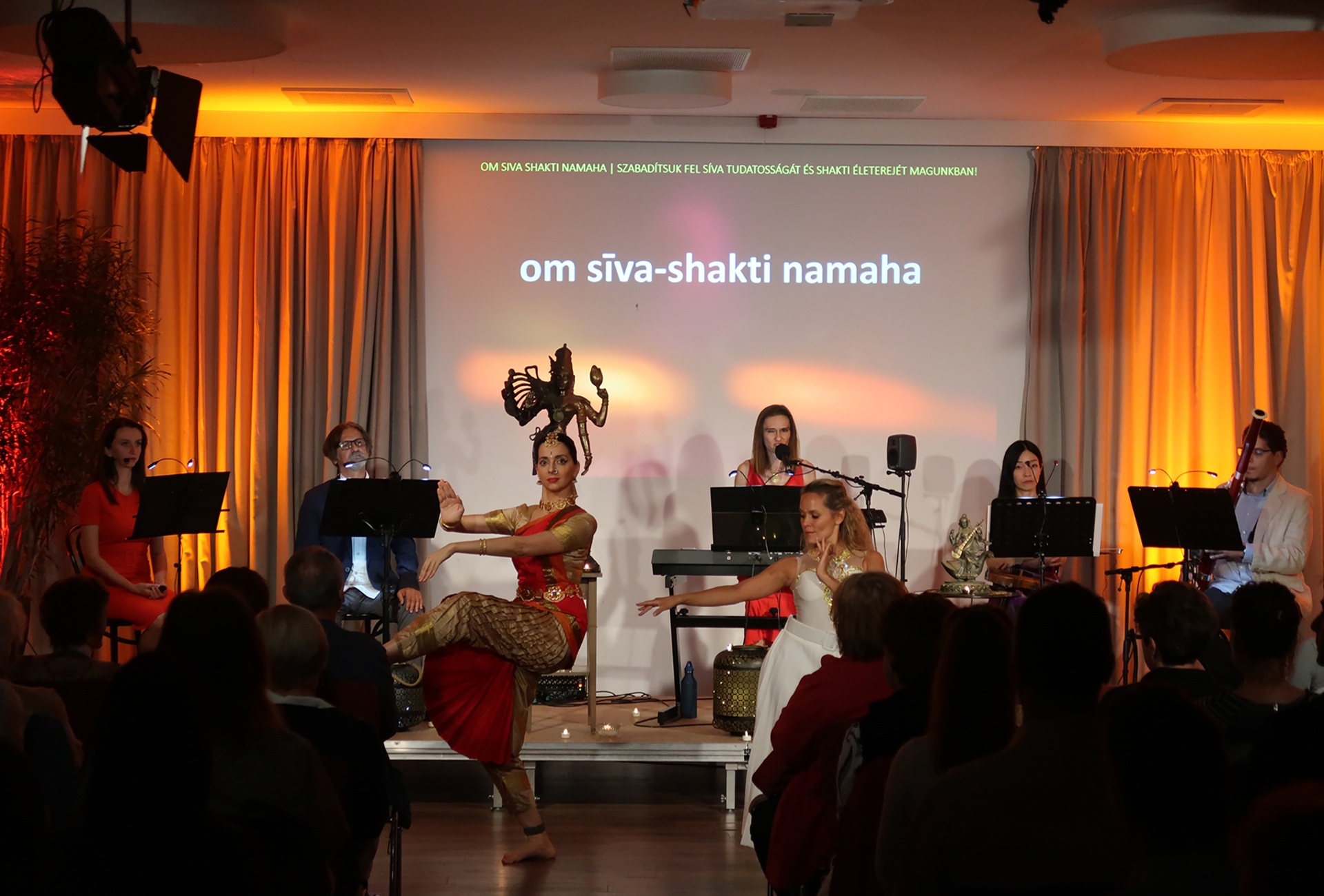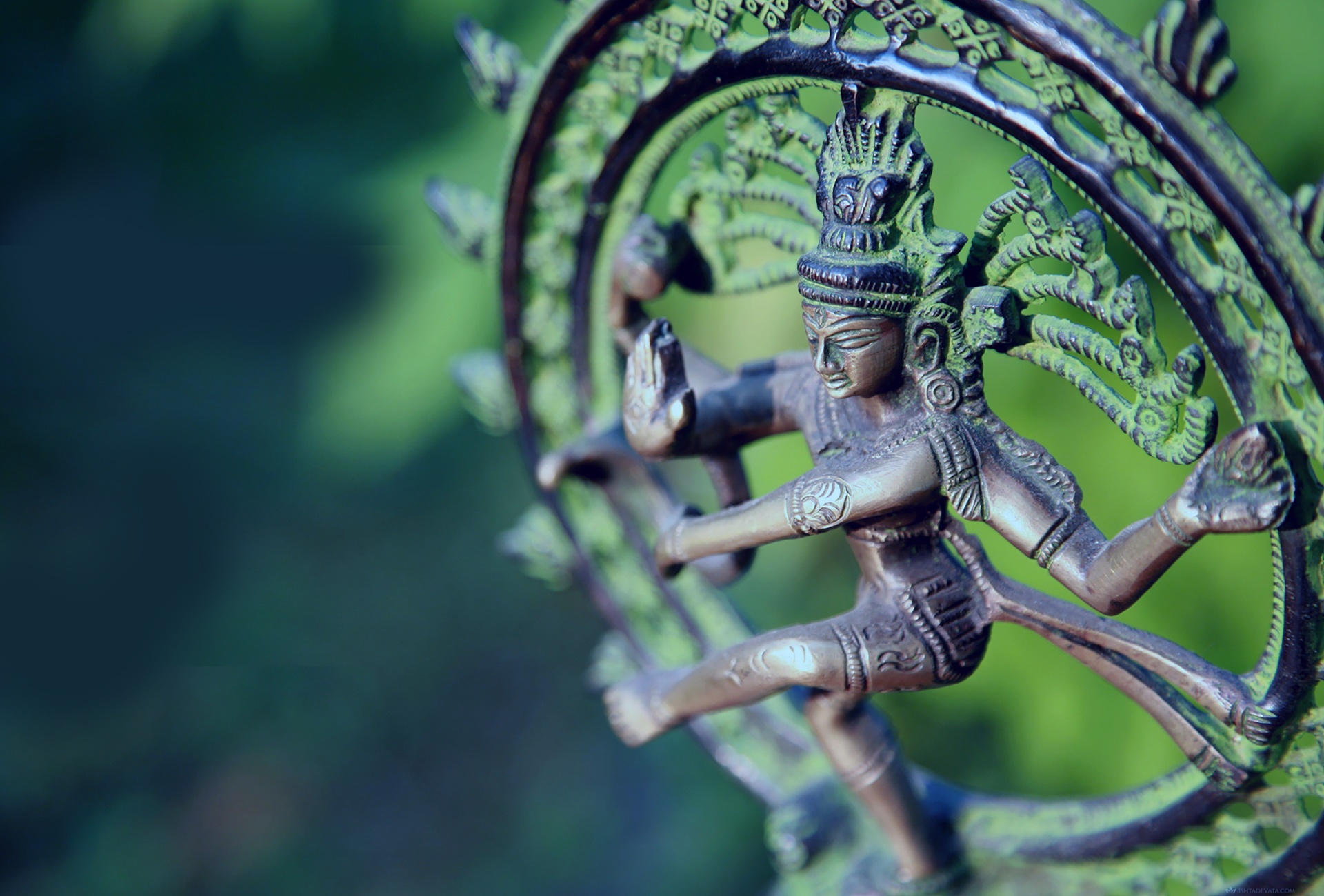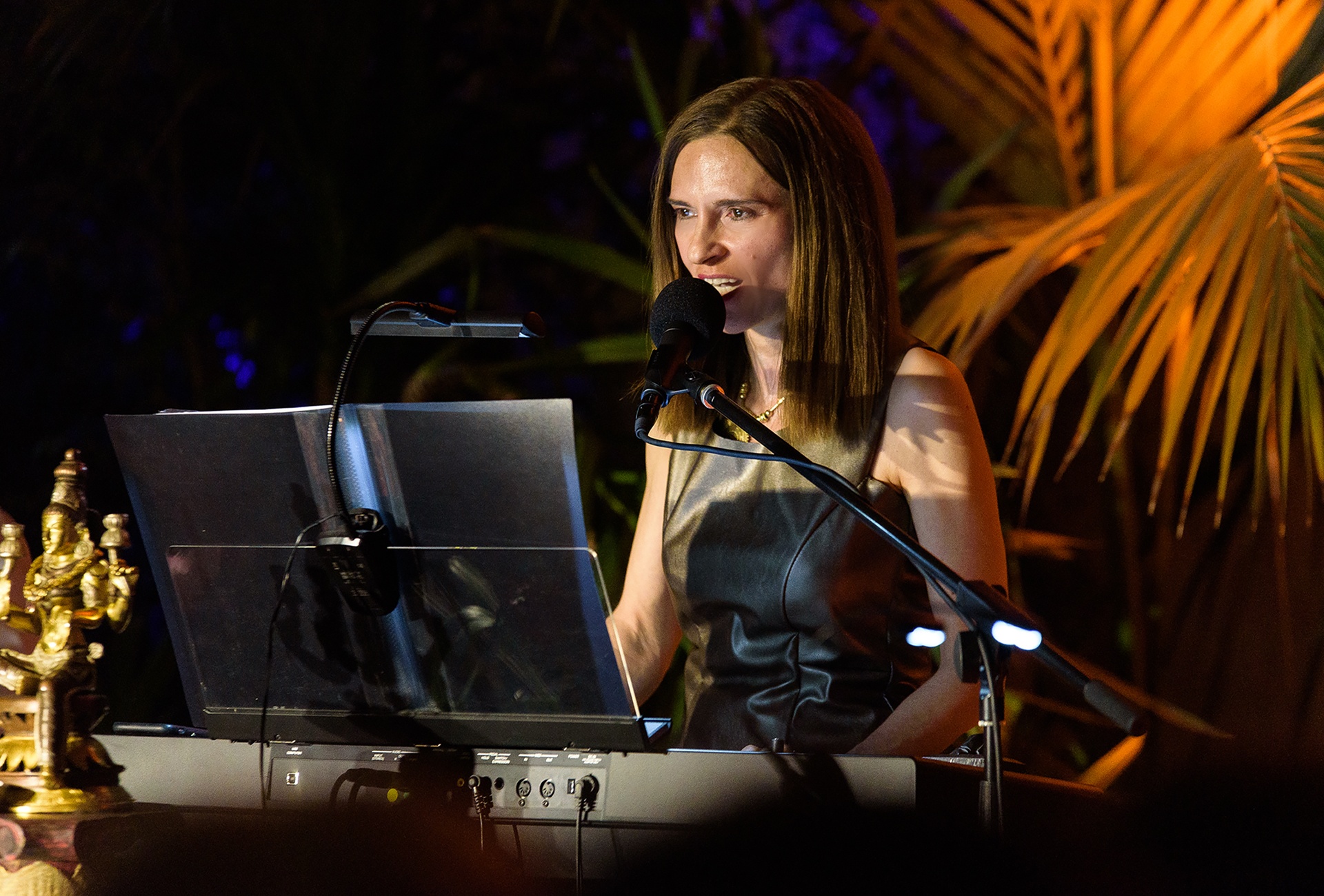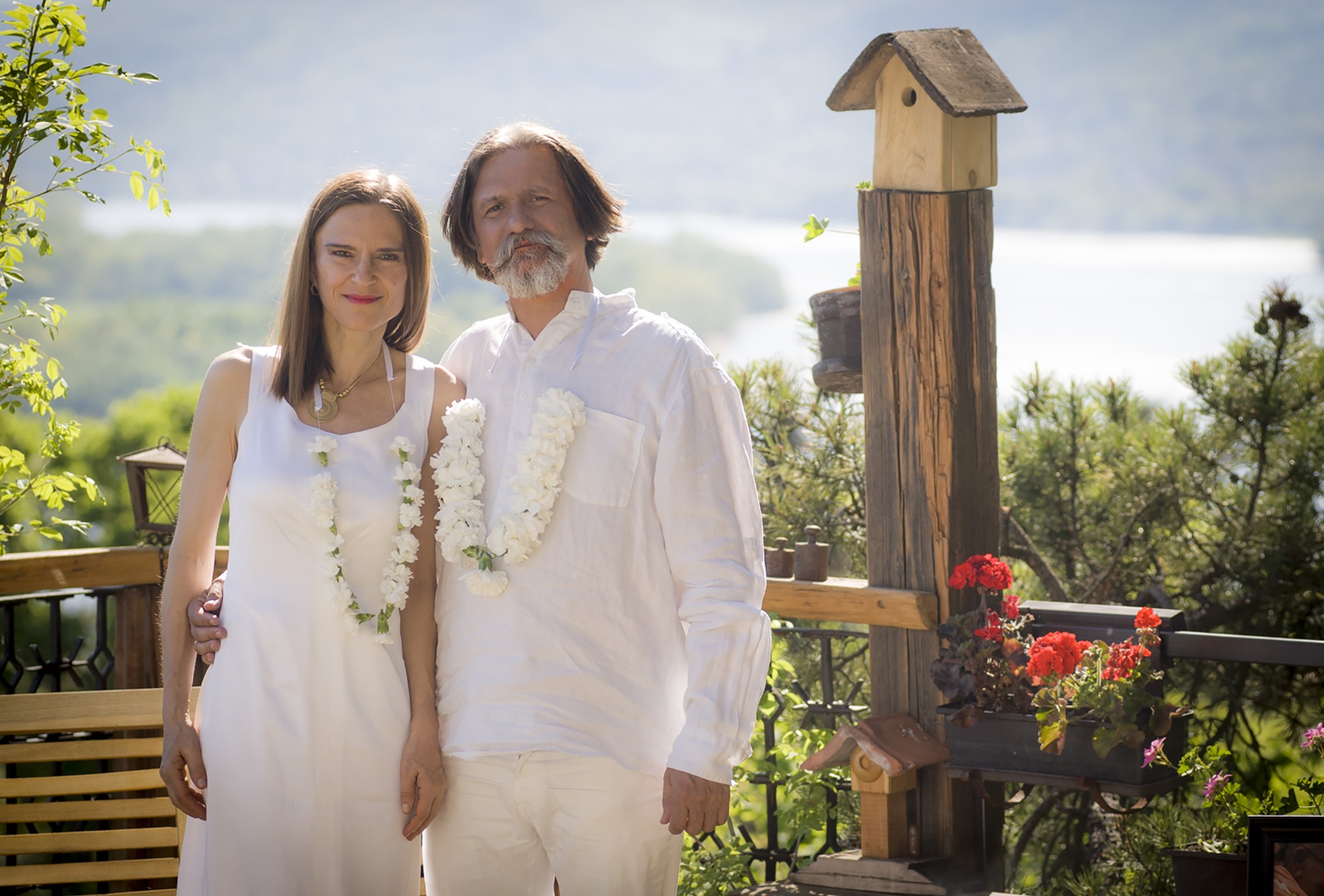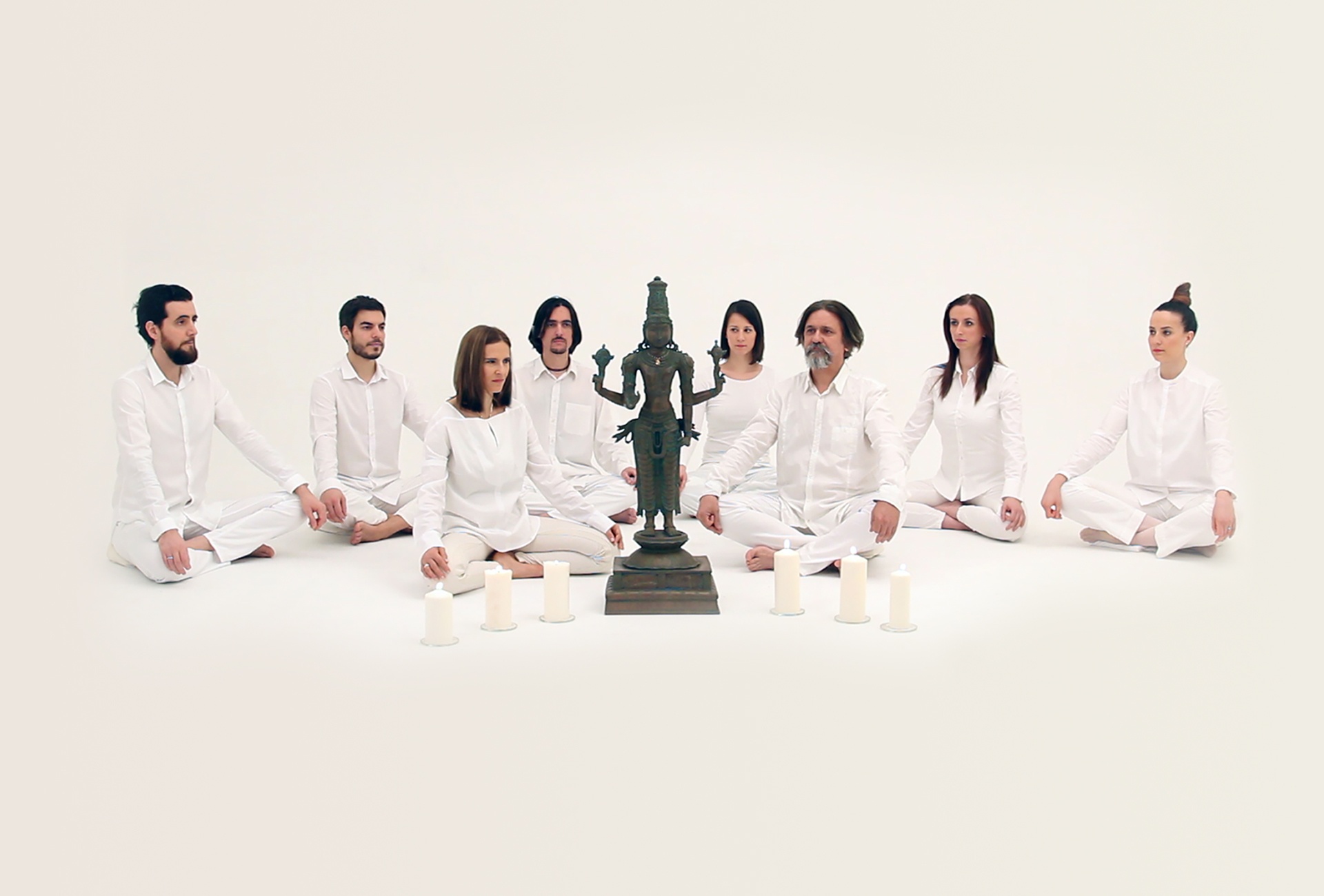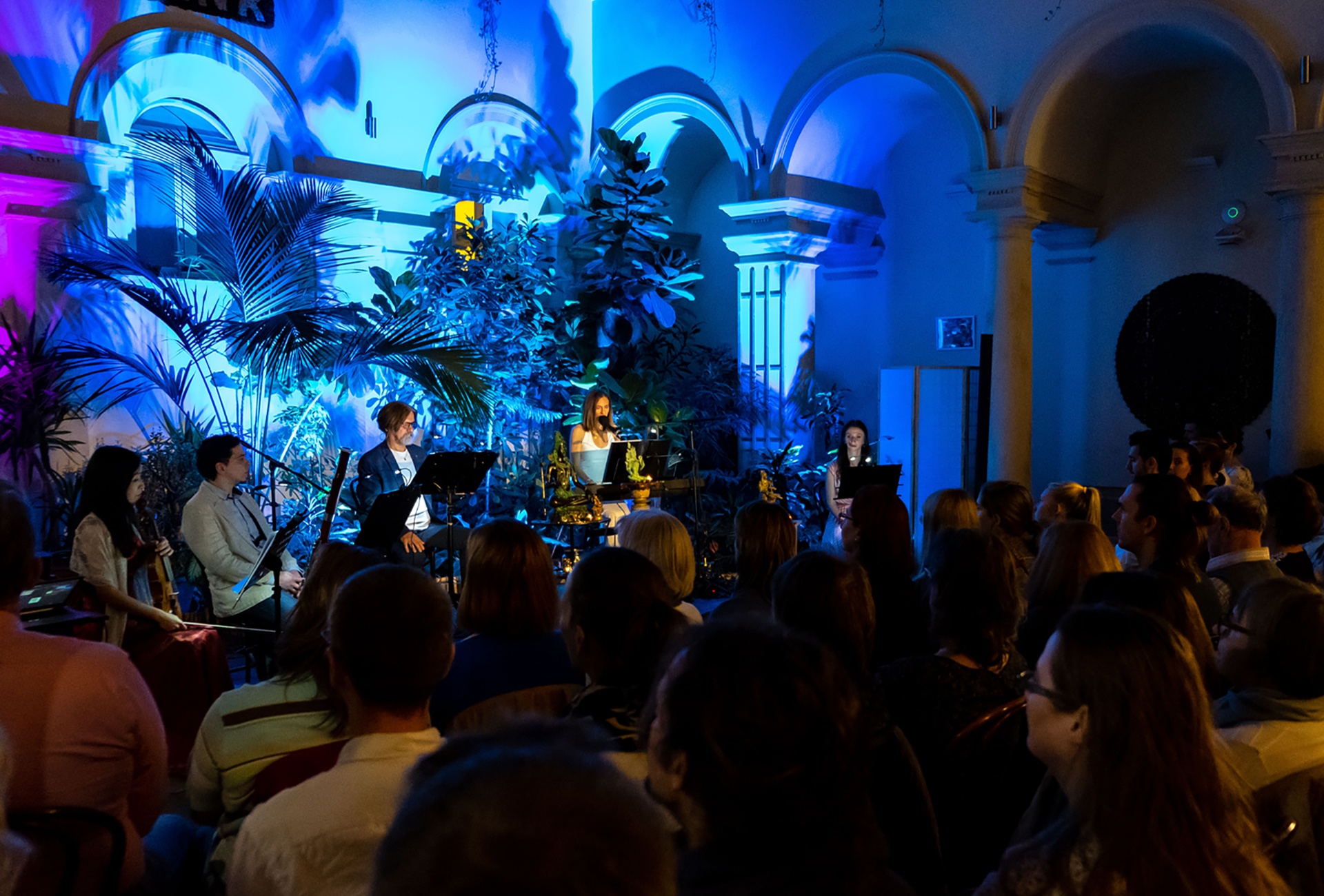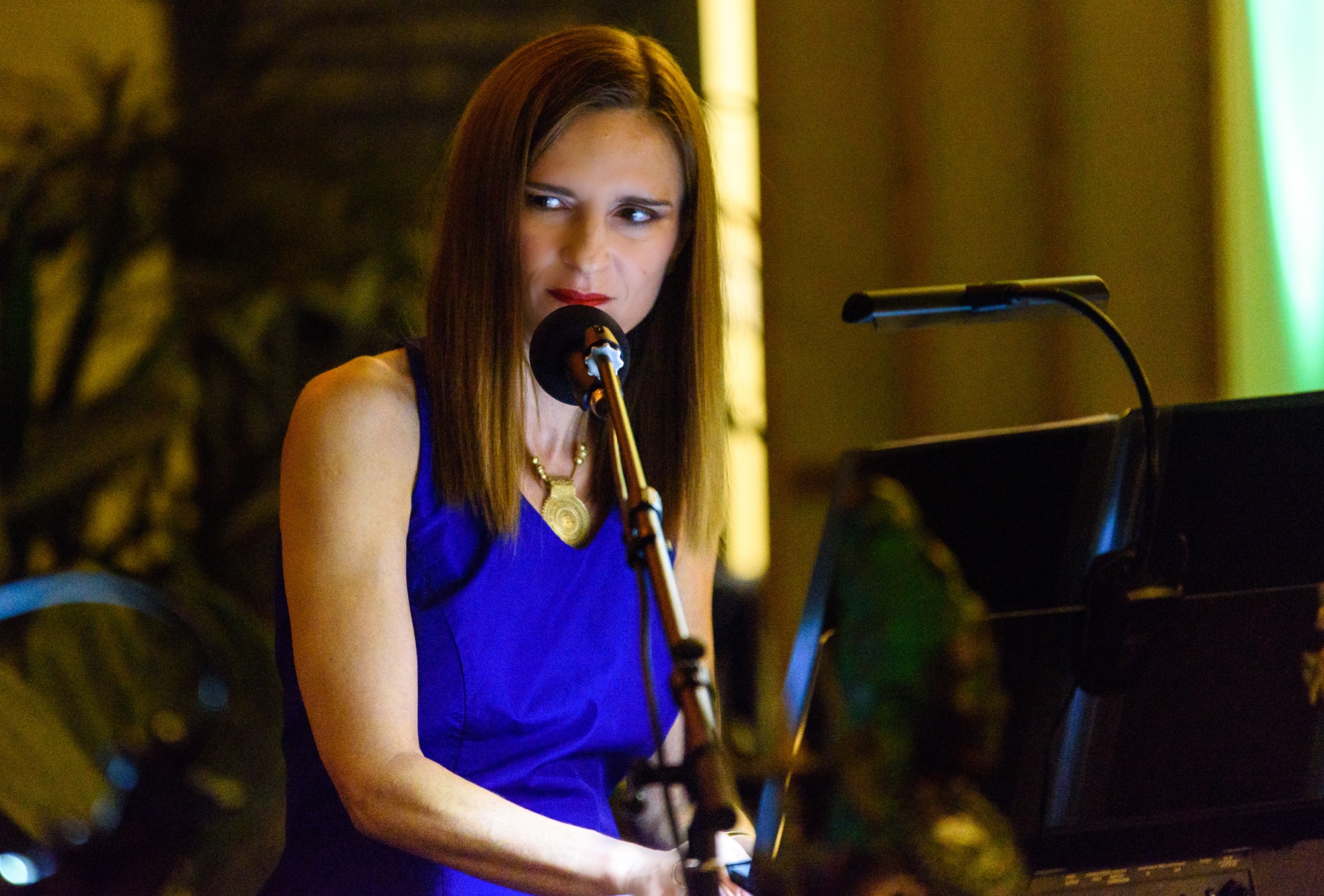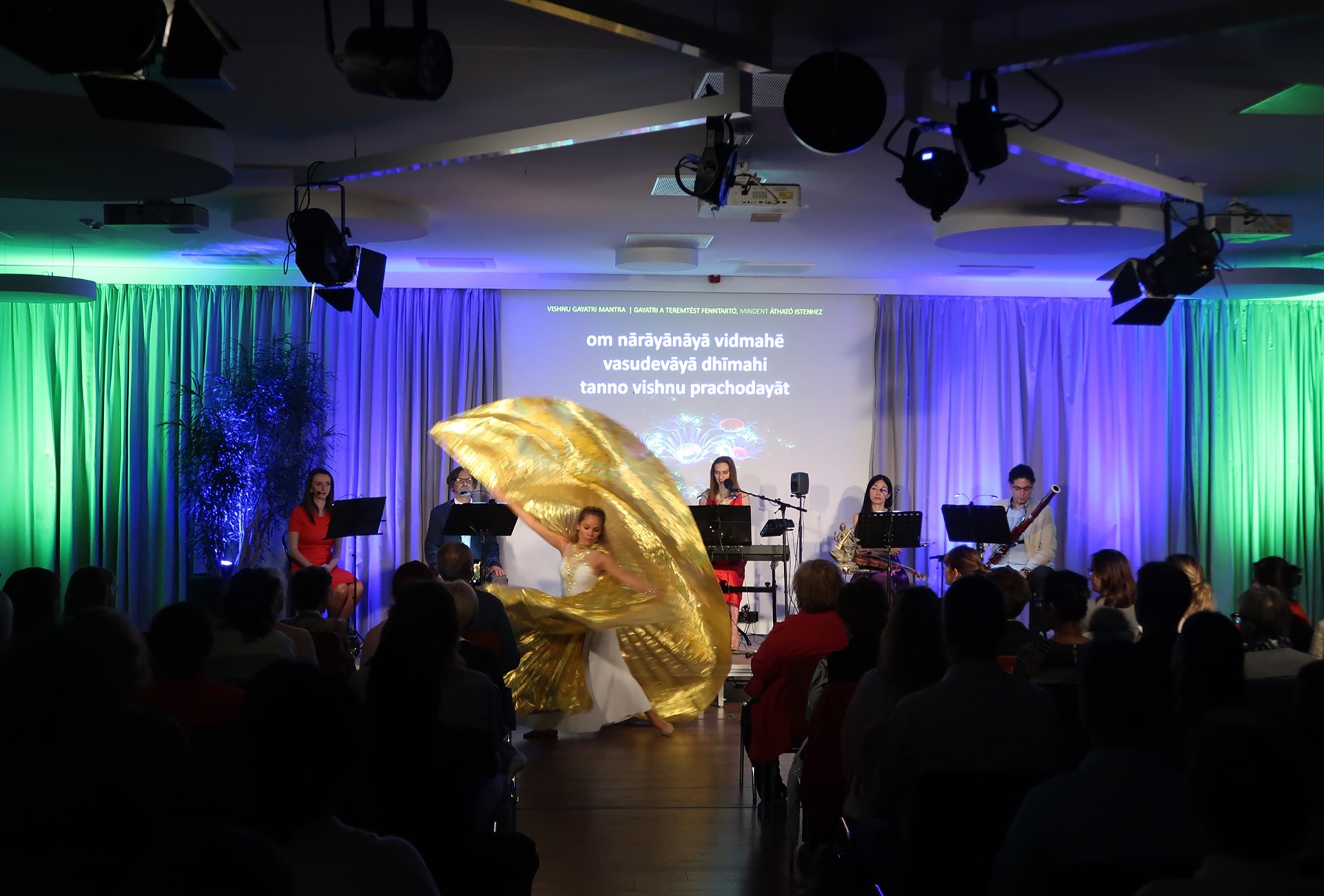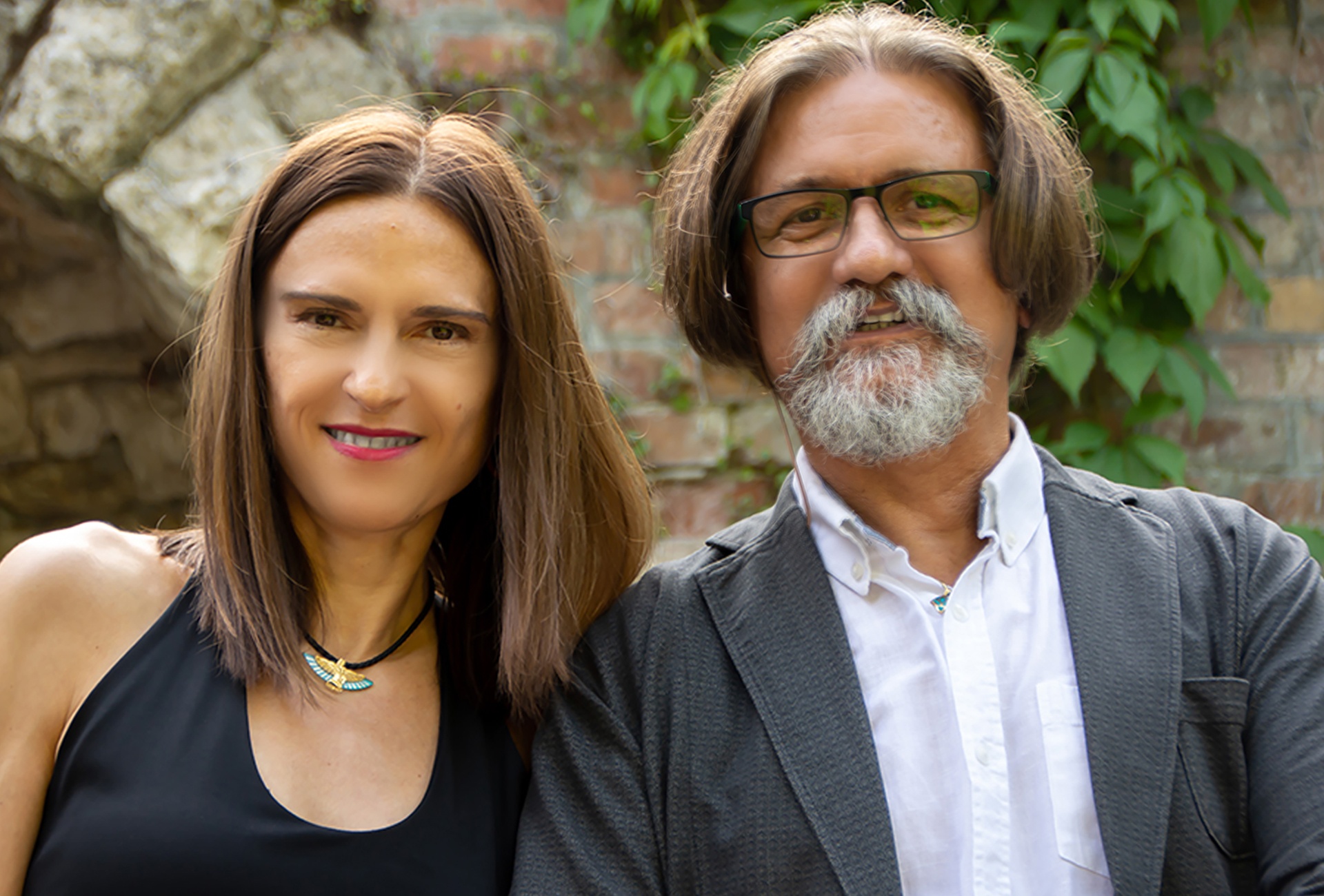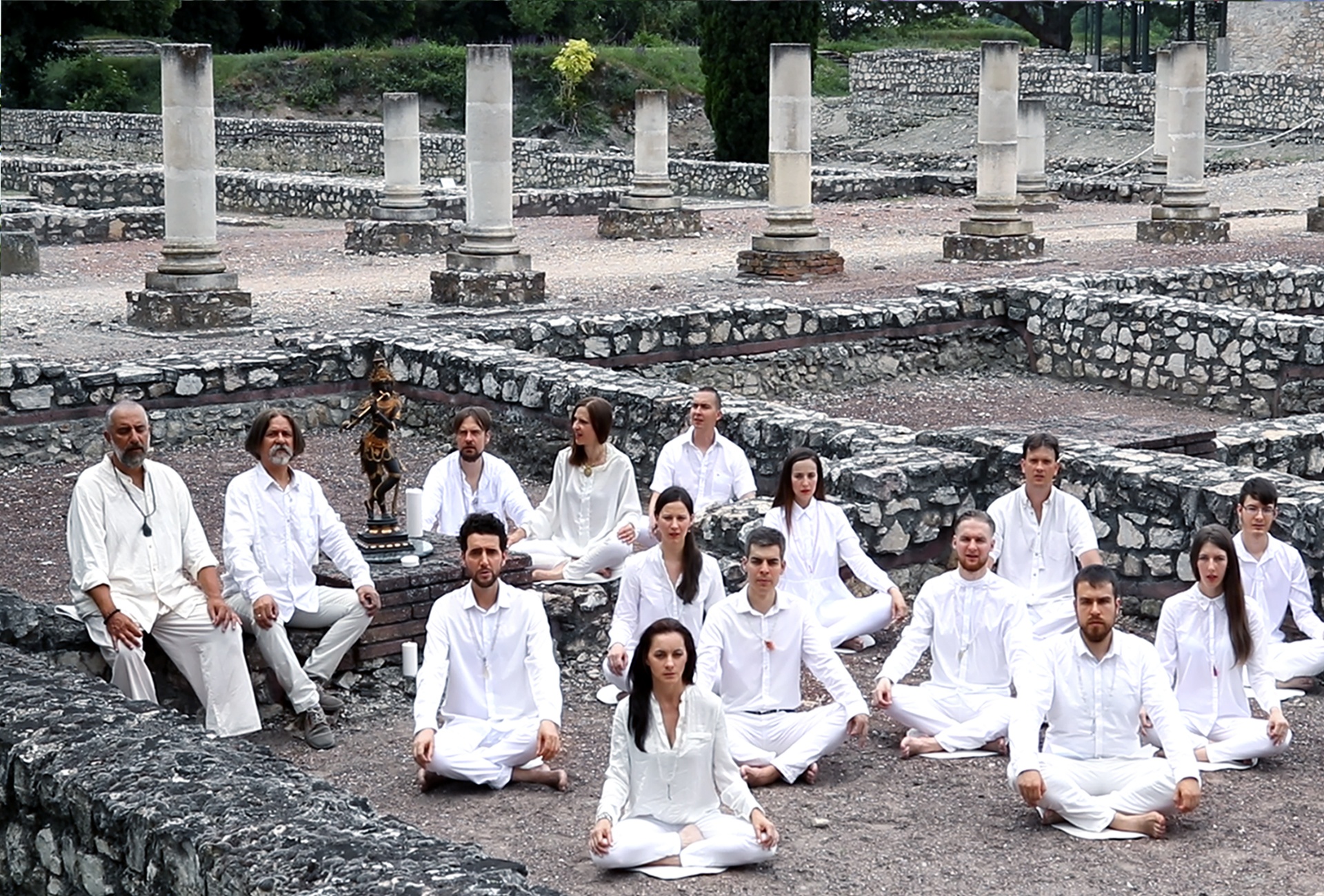Hindu Gods
Trimurti
Trimurti is the trinity of supreme divinity in Hinduism in which the substance of creation, maintenance and destruction are personified by Brahma the creator, Vishnu the preserver and Shiva the destroyer.
Mahadevi
Mahadevi is the Hindu mother goddess, the source of all energy (Shakti). She is also known simply as Devi without the adjective “Maha” (great). Devi literally means a splendid and gorgeous goddess.
Shakti is symbolically feminine, but according to some texts it is not feminine neither masculine. It is a force which manifests in different forms, like the five elements (earth, water, fire, air and ether) or the combination of them. Intelligence, discernment (Viveka), fortitude and willpower (Iccha-shakti) are all forms of manifestation of Shakti. Humanity is its visible form, it is the centre of life in the universe and it pervades the material creation with its life-energy.
According to Saivism, Para-Shakti is a form of the Lord. With his willpower (Iccha-shakti), he decided to multiply. With the force of his knowledge (Jnana-shakti), he invented the instruments of creation. With his energy (Kriya-shakti), he created the universe, which is like a painting on the wall of Iccha-shakti.
According to the Hindu thought, Mahadevi is the Mother of Nature or the Nature itself, her body is the created world and she conducts the symphony of creation. Mahadevi is the Mother, the creator aspect of the Absolute. The Cosmic energy incarnates in and symbolises her. This energy (Kundalini Shakti or Prana Shakti) is the initial and final manifestation of the matter and the sustaining power of the soul – since the energy (Shakti) and the soul (Atman) are inseparable.
The Divine Mother appears everywhere in a triple form. She is adorned with the three Gunas (bonds), which are brightness and purity (Sattva), movement, passion and sufferance (Rajas) and inertia and ignorance (Tamas).
When in contact with Brahma, Vishnu or Shiva, Shakti becomes Brahma-shakti (Saraswati), Visnu-shakti (Lakshmi) or Shiva-shakti (Durga or Mahakali) respectively.
Her supreme aspects are Saraswati, Lakshmi and Parvati (Sati, Durga, Kali).
Brahma
In the Trimurti (Divine Trinity), Brahma is the god of creation who oversees the quality of rajas or movement. He is the Absolute Reality manifested as the creator of the universe. He is traditionally depicted with four arms and four heads – each of his faces reciting one of the four Vedas (Rig-veda, Yajur-veda, Atharva-veda and Sama-veda). His eternal consort is Saraswati, the upholder of knowledge, wisdom and arts.
Saraswati
Hindu goddess Saraswati is the upholder of knowledge, science and arts (especially music, poetry and literature). “Saraswati” means “a woman from the river”. She is also the goddess of speech (Vak Devi), through which knowledge (Jnana) manifests. She blesses her devotees with intelligence, wisdom and good memory. She is the creator of Sanskrit language and writing and the mother of the Vedas.
Goddess Saraswati is the eternal consort of Lord Brahma. Saraswati is a beautiful goddess, who is usually depicted sitting on a swan or a lotus, often playing her stringed instrument, the vina.
Vishnu | Narayana
Vishnu is the supreme god in the Vaishnava tradition of Hinduism. His name has several meanings, the first is „God in man”, the manifesting God (nara = humanity + ayana = path or walkway). According to another interpretation, “nara” means “the fruits of the Self/Soul” and “ayana” means “shelter”, “Narayana” meaning “the shelter of all beings”. Vishnu is the preserver and upholder of the material creation, who pervades and infiltrates everything, thus he is Brahman, the final Reality. According to a third interpretation, “nara” means “water” + “ayana” means “not to move” – Narayana or Vishnu is the one who is lying on the ocean of consciousness or causality. Vishnu is the god residing and manifesting in man, the only shelter of creatures. He is the universal Shelter who dwells in the heart of man. He is the final goal of everything. Vishnu, to preserve the balance in the world, has incarnated on Earth several times. His most known avatars or incarnations are Rama and Krishna, whose stories are narrated in the two most significant Hindu epics, Ramayana and Mahabharata.
Vishnu’s eternal consort is Lakshmi, the goddess of wealth and fortune. Vishnu is usually depicted as a blue-skinned young man with four arms. In his four hands, he is holding a lotus, which refers to the myth of creation, a conch, symbolising the cosmic vibration, the source of creation, a powerful chakra or a spinning wheel and a mace, the symbol of knowledge and power. His mount is Garuda, the eagle.
Vishnu Narayana also appears in the Hindu scriptures as Surya Narayana, the Sun-god and Vasudeva, the god residing in one’s heart.
Lakshmi | Sri Devi
Lakshmi is the personification of the creative energy of the Lord. She is free from Samsara and above of all suffering. Hindu goddess Lakshmi is the goddess of beauty, wealth and fortune, and she is the distributor of wealth among men. She is Mahadevi, who also appears as the eternal consort of Lord Vishnu. She is the creative energy of the Lord and the Divine Mother of the universe. She advocates the cause of the weak and errant humanity before God. She is Purushakara (the mediator between men and God). Lakshmi has incarnated several times in the material world along with Vishnu. When Vishnu incarnated as Rama, Lakshmi appeared as Sita, when her consort manifested as Krisna, she took the form of Radha. According to the tradition, Lakshmi’s presence results in fertility. She is depicted as a beautiful woman, with golden skin, sitting on a lotus. She is also called Sri, which means welfare, wealth, glory, success. The most important celebration honouring goddess Laksmi is Divali, the festival of lights.
Shiva | Rudra | Nataraja
Siva is the supreme god in the Shaiva tradition of Hinduism. The word “Shiva” means fortunate, merciful, beatific, the final reality. According to the Shaiva doctrines, Shiva is the principle deity. This thought is based on Rig-veda, of which Rudra is identified with Shiva. Shiva’s mythological abode is mount Kailasa and the river Ganga flows from his hair.
Shiva is the supreme ascetic and teacher, he is the lord of yoga. His eternal consort is goddess Parvati. In the Trimurti, Shiva is responsible for abolishment and destruction and out of the three gunas, he is the lord of tamas, the quality of inertia and ignorance. Lord Shiva carries out five tasks: creation (Srishti), preservation (Sthiti), destruction (Samhara), concealment (Tirodhana) and mercy (Anugraha). He is depicted with three eyes symbolising the Sun, the Moon and fire. His mount is bull Nandi. Shiva also appears as Nataraja, the lord of dance, who, at the end of creation, destroys the world with his wild force. According to ancient scriptures, Shiva in his essence originates from Rudra. His personal representation is that of a yogi dressed in tiger skin, holding a trident, serpents winding around his neck and arms.
Parvati | Uma | Gauri
Hindu goddess Parvati is the eternal consort of Lord Shiva, personifying the gentle aspect of Mahadevi. Parvati’s name means “the daughter of the mountain”. Her father is Himavan, the lord of the Himalayas. She is Shiva’s second wife and at the same time the reincarnation of his first wife, Sati. Shiva and Parvati’s children are Kartikeya (Skanda or Subrahmanya) and Ganesha.
Durga
The goddess’ name has varied interpretations. Let us see now some of the more important ones. Durga is the “unconceivable”, “the one whom is difficult to attain”,” whom is difficult to conquer”. Durga is the wild aspect of the Hindu mother-goddess, Mahadevi. She is the destroyer of all evil inclinations. She is the fierce, sometimes merciless and furiously protecting manifestation of Shiva’s consort. She is depicted as a beautiful woman with 18 weapons and 10 arms, sitting on his mount, a fierce lion or in the company of a tiger. In Devi-Mahatmya she beats the buffalo demon, who appears in three forms: Mahishashura, Nishumbha and Shumbha. This form of the goddess is known as the one who rescues man from crisis and who protects them. A whole Purana entitled Devi-Bhagavatam is devoted to the goddess.
Kali
Hindu goddess Kali is a form of Parvati, Shiva’s consort. She is the black goddess, since she personifies the past and future covered in darkness. She represents transformation, death and rebirth. According to Hinduism, a new creation can only appear at the price of destruction and annihilation, thus birth and death form an inseparable union. Kali is the mother of time and death. She is the incarnation of time, symbolising the consumptive power of time. That is why her person gains a great importance in Hindu mythology. The word “kali” is the feminine form of “kala”, which means “allocated time”.
Ganesha | Ganapati
Hindu god Ganesha has an elephant head and a human body, he is one of the best-known figures of the Hindu pantheon. He is the supreme remover of obstacles (Gana), thus he is also revered as the god of endeavours, because he removes all obstacles to an undertaking, a journey or an attempt. He is also the patron of sciences and arts and the god of intelligence and wisdom. Hindus pray to him at the beginning of ceremonies and rituals. According to a legend, he transcribed the Mahabharata. Three Puranas are dedicated to Ganesha, these are Ganesha Purana, Mudgala Purana and Ganapati Atharvashirsa.
Krishna
Lord Krishna is the dark blue god (black or dark blue is the colour of infinity, formlessness). He is irresistibly attractive. Krishna in Hinduism is the 8th incarnation or Avatar of Vishnu, who related Bhagavad-gita, which is known today as the Bible of India. In this story which takes place at Kurukshetra (the field of the great battle of Mahabharata), Sri Krishna reveals to Arjuna the nature of God, of the universe and the Atman (the Self), the different types of yoga and the path leading to God.
Krishna appears in different aspects, as a divine child, as the ideal lover, as a divine hero and warrior and as the Supreme Being. His life story is related in Srimad Bhagavatam and in Mahabharata. Vaishnava literature compares Krishna to the Sun, and his consort, Radharani to the sunlight, since they are identic and different at the same time.
Radharani | Radha
Goddess Radharani is the companion and eternal love of Krishna, she is the most revered Gopi, who enjoyed her pastimes with Krishna in the groves of Vrindavan.
Rama | Ramachandra
Rama is the legendary king of Ayodhya in ancient India. According to Hindu doctrines, he is the 7th avatar of Vishnu. He is the personification of Sanathana dharma (the eternal law, our personal duty). His acts are described in Ramayana. His eternal consort is goddess Sita.
Sita
Goddess Sita is the eternal consort of Rama. “Sita” means “furrow”, which refers to the circumstances of her birth. She is the daughter of king Janaka, and the heroine of Ramayana.
Dhanvantari
Dhanvantari is the god of Ayurveda & Vedic Medicine holding the nectar of immortality in his hand. He is the divine healing avatar of Lord Mahá Vishnu.
Tara
Tara is the goddess of compassion, mercy and protection. According to the Buddhist tradition, she manifests in two aspects. Green Tara, the goddess of Earth represents night, she is the incarnation of the wisdom of Buddha consciousness and mercy, who fights all obstacles and saves us from danger. White Tara is the goddess of day, she is the giver of peace, protection and long life. These two aspects unite in the goddess of compassion, Tara, who, day and night, works to ease the suffering of every being.
Agni
Agni is the god of the sacrificial fire, the priest of the heavenly gods and the pastor of creation. There are five kinds of fire: the fire of time (Kala-agni), the fire of hunger (Ksudha-agni), the fire of cold (Sita-agni), the fire of fury (Kopa-agni) and the fire of knowledge (Jnana-agni). These five fires dwell in the legs, navel, stomach, eyes and heart. The Hindu Shrauta ritual comprises three types of fire: the fire of the householder (Garha-patya), the sacrificial fire (Ahavaniya) and the southern fire (Dakshina). To celebrate a Shrauta ritual, someone has to “make these three fires burn”. In the Vedas, Agni appears in three forms: in the sky he appears as the Sun, in the air as a thunder and on the earth simply as fire. According to Hindu tradition, Agni represents the Divine Will or the sacred sparkle of the godhead in man. Fire is also the God-priest, representing the brightness of God. Agni is the mediator between humans and gods, the protector of man, and the witness of human actions. Agni is one of the principle gods of the Vedas, of which most hymns are dedicated to him.
Kamadeva
“Kama” literally means “desire”, “pleasure” and “love”. Kamadeva was born from the mind of the Creator (Brahma). He personifies one of the four values of life, the one which gives pleasure and spirituality. In Hindu mythology, Kamadeva is the god of love, beauty and sexual desire. In the Vedic era, he was considered the incarnation of the cosmic desire or the creative force, one of the first elements of creation which laid the foundation for the further creative acts.
Indra
Indra is the king of heavens, the king and commander of gods, the god of thunder, lightning, rain and war. His abode is Mount Meru. According to Hindu mythology, Indra separated the Sky from the Earth. He is identified with power. He is the god of the atmosphere, sky and rain, who, in Vedic mythology, rules the gods of the intermediate world, fights with the forces of the darkness, the demons, and beats them with his lightnings. He gains his immense force from the divine drink called Soma (the special drink used during Vedic rituals, the nectar of immortality).
The central role he played in Rig-veda declined over the development of Hinduism, in parallel to the ascent of the figures of Vishnu and Shiva.
/ Edited by: Judit Eszter Bakos | Virinchi Shakti & Attila Bakos
/ English translation: Éva Berki



















